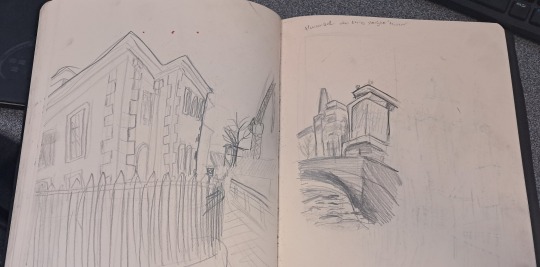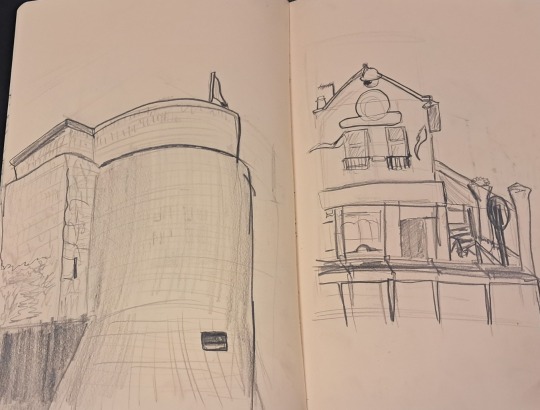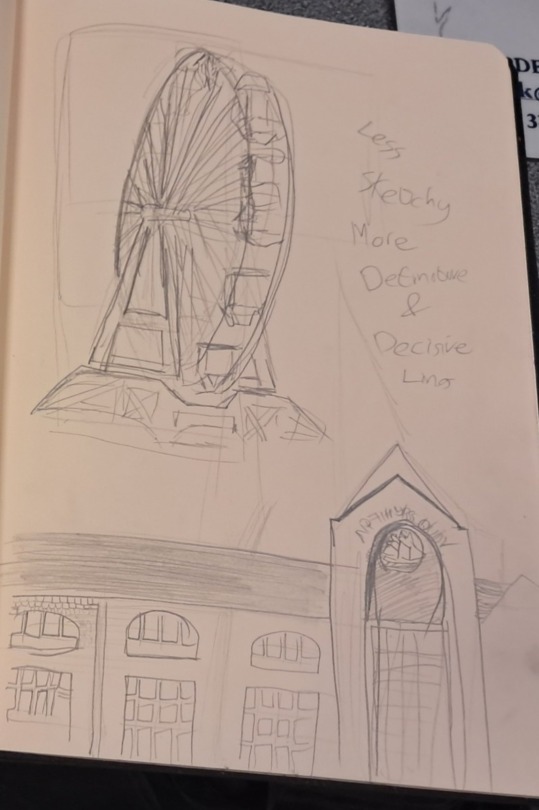#thomond
Explore tagged Tumblr posts
Text
#OTD in 1318 – Richard de Clare, Lord of Thomond, a descendant of Strongbow, is killed while commanding his forces at the Battle of Dysert O’Dea.
The Normans were very unsuccessful in trying to establish themselves in Clare. They had but one small section in Bunratty guarded by a strong Castle of the same name. In 1318 Richard DeClare occupied the Castle of Bunratty. In May of that year he was joined by some Irish traitors and they proceeded with a very strong Army of English and Irish to attack Conor O’Dea of Dysert O’Dea and establish…

View On WordPress
#Battle of Lough Raska#Brian Boru#Bunratty#Co. Clare#Conchobhar Ó Deághaidh#Dysert O&039;Dea Castle#English#Ennis#Feilim O’Connor#Irish#Murrough O&039;Brien#Murtough O’Brien#Normans#Richard de Clare#Strongbow#Thomond
6 notes
·
View notes
Photo

Christopher Thomond | The Guardian
12 notes
·
View notes
Text

IE-TH 1961 ½ p Pink Roses - Europa 1961
#ireland#principality of thomond#roses#plants#flora#flowers#1960s#cinderella stamp#stamp#stamps#philately#stamp collection#snail mail#postage#postage stamp#usps
0 notes
Text

Scarborough, UK
The installation Lillies by the Hungarian artists Réka Magyar and Péter Koros glows at Peasholm Park as part of the North Yorkshire town’s lights festival
Photograph: Christopher Thomond/The Guardian
#christopher thomond#photographer#the guardian#scarborough#united kingdom#art installation#light installation#lillies#hungarian artists#peasholm park#north yorkshire#reka magyar#peter koros
0 notes
Photo

Shining a light on a stained glass artist – in pictures Nathalie Hildegarde Liege is an stained glass artist, artisan and the owner of Couleurlive Limited, and has a studio in the heart of Shrewsbury. Nathalie studied fine art and worked at the Pompidou centre in Paris before deciding to change career to work in glass Continue reading... https://www.theguardian.com/artanddesign/gallery/2023/mar/24/shining-a-light-on-a-stained-glass-artist-in-pictures
0 notes
Text

December 12, 2023: York, UK Linnea Isén from Småland, Sweden, plays the role of Lucia as she sings with the London Nordic Choir performing in the annual Sankta Lucia: Festival of Light service in York minster Photograph: Christopher Thomond/The Guardian
58 notes
·
View notes
Text

🇮🇪 Thomond Bridge and King John's Castle (Caisleán Luimnigh) in Limerick (Luimneach), Ireland - a drawing by J. D. Harding, from "Picturesque Views of the Antiquities of Ireland", published in 1830.
#Limerick#Luimneach#J D Harding#Éire#Ireland#Irish#Fascinating Europe#Europa#Europe#Architectural Revival#heritage#European Heritage#Western Art#European Art#drawing#castle#bridge#castles#vintage#Vintage Art#art#artwork#Old Views#western europe#1830s#19th century#architecture
11 notes
·
View notes
Text










This week, I worked on two exciting projects. The first one, called “Between The Bridges” took place in a section of Limerick between Sarsfield Bridge and Thomond Bridge. My task was to create sketches of anything that caught my attention in this area, aiming for about six different drawings. I kept my sketches quick and spontaneous.
7 notes
·
View notes
Photo

Vauxhall 30-98 Dashboard Castleton Garage, Castleton, Derbyshire, UK proprietor: Roger Thorpe image credit: Christopher Thomond/The Guardian
125 notes
·
View notes
Text
radius project - sketchbook spreads

I started on the right page on the 16th when we first visited our radius area. Sketching on site in front of the fountain and later finishing it in the college from photos taken from the same view.
I spread it across both pages in order to properly fit my subject in proper proportion. It was nice to incorporate this and then used the remaining space on the left to sketch the view of King John's Castle, Thomond Bridge and the space left where the old mill used to be.

On this page i began by sketching the swans from photo references in colouring pencil coloured ball point. I was glad to use blue and orange together as they work well together as contrasting colours and occur naturally with the water and the swan's beaks.
5 notes
·
View notes
Text
A Gateway to the Past
Following Monday’s text about souvenirs of Dromoland Castle’s earlier history, it is worth looking at another feature on the estate. A previous residence of the O’Brien family, Leamaneh Castle, County Clare has featured here before (see The Legacy of Máire Rúa « The Irish Aesthete). That building was constructed around 1480 by Turlogh O’Brien, King of Thomond, and is said to derive its name from…

View On WordPress
2 notes
·
View notes
Text
Guaire Aidne mac Colmáin and Dunguaire Castle
On the southern shore of Galway Bay sits the lonely shape of Dunguaire Castle. It was built in 1520 on the site of the palace of the legendary King Guaire’s palace, for which it was named. The castle was built by the Hynes clan, who were fighting fiercely against the encroachment of the Normans and English. Little is known of its construction, indeed even the name of the Hynes chieftain who built…

View On WordPress
#Chief Ollam of Ireland#Co. Galway#Diana#Duke of Cambridge#Dunguaire Castle#Guaire Aidne mac Colmáin#King of Uí Fiachrach Aidhne#Mícheál Ó Cléirigh#Munster#Prince Harry#Prince William#Princess of Wales#Saint Mocua#Senchán Torpéist#Thomond
17 notes
·
View notes
Photo

Darryl Kelbrick | Christopher Thomond | The Guardian
12 notes
·
View notes
Text
Madame Putiphar Groupread. Book Four, Chapter III
𝔊𝔬𝔬𝔡 𝔍𝔞𝔦𝔩𝔢𝔯, 𝔅𝔞𝔡 𝔍𝔞𝔦𝔩𝔢𝔯
“Of truth we know nothing, for truth is in a well.”
-Democritus


Goya, prints number 79 and 80 from Los desastres de la guerra. Murió la Verdad and Sí resucitará? Truth is dead, but her light shines still from the well. More allegories of Truth here .
{ @counterwiddershins + @sainteverge }
Join me while I try to decide what is the Prison Gobernor’s agenda. I think it's pretty clear what Borel seems to be doing with him though, whether he is sincere or not. This chapter adds yet another guise of the Jailer, of which we have already seen so many: the madame, Lady Cockermouth and Chris, Villepastour, etc. This version of the oppressor is kind, soft spoken and gentle, empathetic. But it’s honestly irrelevant, since the result is the same: deprivation of rights ( in fact kind jailers might be even worse) Like a lobster boiled alive, the more naif people might be lulled into a false sense of safety, get used and even come to love their chains. Not Deborah.
We find her now, as she says, crying out of innertia. The gobernor presents himself to her: he doesn't want to be thought of as a jailer, since he loves and cares for all his prisoners, he isn’t even an admirer of Louis XV, a relative of his. (the metaphor is clear, if we believe him, this man is a kind person, he does NOT like the king-but is a noble. Or a bastard, he must have done something to deserve such a job. He is -or seems to be- legitimately trying to make the best of a terrible situation, either out of practicity-after all, a Prince should aim to be loved rather than feared- or genuinelly. It is not unheard of, some jailers are not sadists. But all of this doesn’t change the fact that Deborah has been raped, prostituted, and is currently being incarcerated illegally out of royal caprice)
This quote provides a strong argument for discarding this his genuinelly being a good man with a terrible job, there is a kind of pride or even perverse pleasure here:
"J’éprouve une joie profonde à me voir aimé de gents qui devoient me haïr. Ceci montre qu’il n’est pas de position dans la vie qu’on ne puisse ennoblir et sanctifier."
He is clearly not a Kantian. He does Good because it brings him pleasure (vs. for Good's sake). He makes people who should hate him, love him (and through love, he makes them submit to him) And everyone is happy because rebellion is quite inconvenient, too much effort, too much violence... His second statement almost reeks of Panglossianism. There is NO job that cannot be made noble, even being a jailer, a mercenary, or a torturer… if the people love their executioner, their exploiter, their role is sanctified, because the role (of the oppressor) is performed with love.
[Next is the obligatory Romanticism Bingo moment: claiming the role of providence mentioned]
it’s also interesting how Borel make us feel Deborah’s trauma through her interlocutor’s words, he says he’s interested in her for she is young and beautiful, and immediately has to add he’s just a poor old man with one foot in the grave to reassure her. The old gobernor claims however that the true root of his affection is her nationality. Because his protector was an Irishman: the now Count of Thomond, who is what Patrick could have become if he had played his cards right, aka, an ennobled irishman defending French interests in the Battle of Fontenoy, disputing territory from the Austrian Netherlands. (I have no idea whose position was fairer in this territorial dispute but it seems to be just about geopolitics and strategic control, kicking England out, fortifying France's position, etc. The man seems to have been just defending France's imperial geostrategic interests)
The jailer asks, as a favour (and this could be dangerous, but Deborah chooses to trust him) to be told the causes of her incarceration, since her lettre-de-cachet doesn’t specify them. Deborah outdoes his request, tells him the story of her life. True sympathy develops between the two, as the enigmatic jailer and Deborah are both driven to tears by her story. Deborah is very much in need to unburden herself, and this man is kind and mild mannered.
The man consoles her, as if he were administring a sedative in minute doses. Softly, he asks her to forget. They will play pretend she is not a prisoner. Because, aren’t humans captives anywhere in this world? (this is as you have already heard me say, one of the main themes of the book. Never before expressed so explicitly as now. However the Gobernor isn't at all a mouthpiece for Borel, since he is perverting the premise, using it to instill pasivity in his current victim, and in a way, to minimize the damage of the lettres-de-chachet:
Ce ne sont pas les lettres-de-cachet qui font le plus de prisonniers, ce sont les liens de famille, la pauvreté, les travaux mercenaires, le ménage, la nonchalance, les préjugés. Vous ne sauriez habiter, mylady, un plus vaste et plus romantique manoir, une île plus délicieuse, une mer plus belle sous un ciel plus pur.
I thought the inclusion of the word Romantic was interesting, this is not the literal meaning of the phrase, but it's evocative enough. can fiction, can a romanticism malpractice so to speak, also become a jail of sorts? the fortress is beautiful, the Island too, so why not imagine it as one of the locations of Deborah's favorite novels?
The man even rhetorically transforms prisons into something natural, in his speech, animal made refuges become cells, in a sophistic turn of phrase made to infuriate any rousseaunian:
“L’aigle même n’a-t-il pas son aire? l’ours n’a-t-il pas sa caverne?”
Deborah isn’t fooled by any of this, she asseses his remaks exactly as what they are: rhetorical resources. She gently mocks his sophisms affirming he isn’t far from claiming there are only free men inside the cells. As Walpole, (Deborah and Borel pay tribute to the father of Gothic literature) who jokingly affirmed the need to lock the few remaining sane people in Bedlam to preserve them from the madness of the world, trap the few remaining"sane", release the "mad" since the world is already insane. She cuts to the chase: how long is she condemned to be free in "this Bastille"?
-Perpetualy.
A philosophical reflexion follows, how can men have the hubris to claim to own the remaining time of someone’s life, (and isn’t life potentially shortened by such sentences?) Deborah proposes, once again, suicide as an act of rebellion and pursuit of freedom. No matter what happens, she is still free to end her life, and cut her sentence short. Actual escape, once again, as a pregnant woman who on top of everything is in a remote wilderness surrounded by water, seems impossible for her.
As a palliative, the Governor offers Hope, another weapon in his arsenal: when Putiphar dies, Deborah would eventually be released.
Deborah doesn’t buy it. If Putiphar died anytime soon, she’d return to being a slave (at the Parc-aux-Cerfs) The Governor smiles, like a defeated Sphinx, warmly shakes her hands, and walks away.
#madame putiphar#text post#suicide mention#cannot help but think of the frontispiece of Borel's rhapsodies... suicide as rebellion (at least aesthetically) seems to have been one#of his artistic obsessions#also this jailer might be an allusion to some kind of dialoguist/centrist politician? it evokes that to me. no idea
4 notes
·
View notes
Text



Only positives of being at Thomond Park in a yellow weather storm on Boxing Day 😍😍😍
7 notes
·
View notes
Text
Sketch Sesh - Limerick City
Architecture and Cityscape
For our 2nd session of sketching observational studies we went our Limerick City, well went around King's Island and King John's.
Anyway here's the sketches from that journey.
Old Limerick City Courthouse




King John's Closeup on round tower and Katie Daly's

King's John by Thomond Bridge
The Wagon Wheel & and view of Arthur's Quay from the Wheel.




2 notes
·
View notes